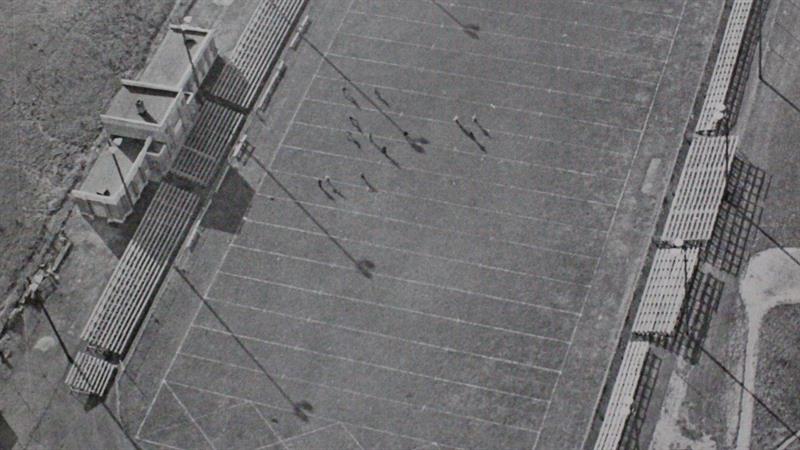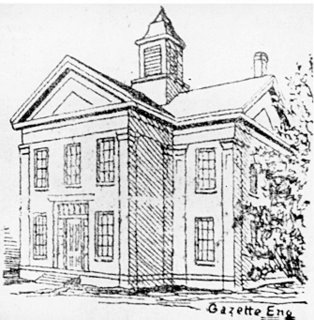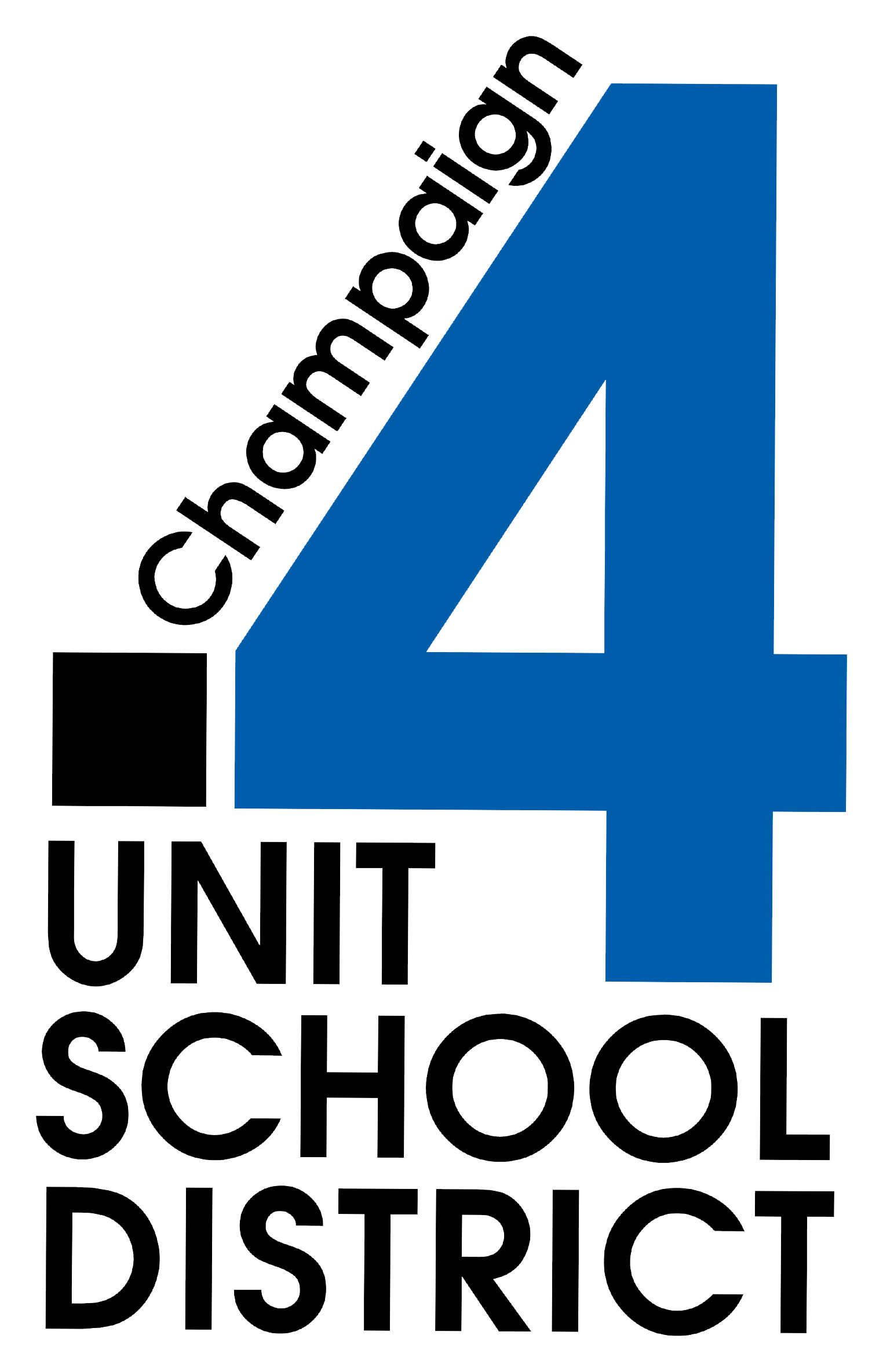Links
Did You Know?

Timeline
1853 Private school is built in Hensley Township. School starts the next year with tuition at $13 per month; enrollment is 12 students. No public schools exist in Illinois.
1855 Illinois law is passed on which present statewide system of public schools is based. Champaign is divided into District 1 and District 2. First public school, Little Brick, is built for $4,000 on corner of Randolph and Hill in District 1.
1868 District 1 erects second building, West High, at Lynn, University, and Park Streets: Brick structure costs $80,000. First District 2 school is built in 1860 but destroyed by fire following year. Second building is also destroyed by fire the following year. When rebuilt in 1872, it’s known as East High School, later changing name to Marquette.
1890 Reorganization of two districts results in single district, Union District No. 6. Students from both districts are housed in West High, which becomes Champaign
High School.
1892 Little Brick is burned to clear ground for new Central School to accommodate large number of students.
1892 West High School building is burned and new elementary school, Avenue School, is built.
1894 Lincoln Elementary opens.
1898 Willard and Gregory open.
1891 Football is introduced to Champaign High School.
1897 Champaign wins its first State Championship in football.
1901 District’s name is changed to Champaign District 71. School is now in session for approximately 175 days. Shift from gender-specific curriculum to a single curriculum. High school has five curricula: Latin, German, Latin scientific, German scientific, and English.
1908 Curriculum is revised to more closely resemble current-day curriculum including classes in foreign languages, biological science, commerce, and English.
1905 Columbia and Colonel Wolfe Elementary open.
1907 Lawhead Elementary opens.
1910 Dr. Howard Elementary opens.
1914 Senior high school on Green Street (currently Edison) opens and is planned to house 1,000 pupils, although there are only 585 at the time.
1924 Southside Elementary opens.
1925 Senior high school is filled to capacity. Old high school, Central, is converted to elementary school when new high school is built.
1927 Lottie Switzer Elementary opens.
1935 Junior high school opens on site of old Avenue School, which had been torn down. (This is currently Central High School.)
1948 Post-World War II measures encourage reorganization of districts into more efficient units. Champaign District 71 and 12 former one-room districts in area are consolidated into Community Unit District No. 4.
1951 Westview and Booker T. Washington Elementary open.
1954 Franklin Junior High opens.
1955 Bottenfield Elementary opens.
1956 High school on Green Street is converted to Edison Junior High. The old junior high at Lynn, University, and Park is converted, with major addition, to Central High School.
1957 Carrie Busey Elementary opens.
1958 Garden Hills Elementary opens.
1961 Jefferson Middle School opens.
1963 Building on the Annex for Champaign High begins, serving as supplementary classrooms.
1963 Kenwood Elementary opens.
1965 Annex is completed and officially named Centennial High School after adjacent park.
1967 Robeson Elementary opens to help keep pace with rapidly expanding southwest Champaign.
1968 As result of recommendation of Equal Education Opportunities Committee, district’s elementary boundaries are reorganized to provide racially balanced population in all elementary schools.
1970s Population dip leads to closing of several older schools in district.
1977-78 Unit 4 adjusts attendance levels to K-5, 6-8, and 9-12. The three junior highs convert to middle school concept.
1982 Southside closes and is briefly used by Champaign Park District.
1989 Southside reopens.
1998 Barkstall School opens. Stratton School opens on land just south of Columbia to provide more north-side seats for Unit 4.
2009 County-wide 1% sales tax is passed by voters, enabling renovations and expansions of Kenwood, BTW, Garden Hills, Carey Busey, Westview, Bottenfield, and Robeson.
2011 Booker T. Washington reopens as magnet school with STEM focus. Garden Hills Elementary School is renovated and expanded as magnet school with STEM program, including foreign language and a secondary emphasis on the arts.
2015 Kenwood Elementary is renovated.
2016 Passage of $183.4 million referendum enables extensive renovation of Centennial.
History
Champaign is a blossoming city, and our growth can be seen in many areas throughout schools and the broader community. Our current enrollment has grown to more than 10,000 students who represent 77 countries and speak more than 60 languages. Our building facilities have also evolved as we have added two elementary schools over the last two decades. We have also rebuilt two elementary schools and a high school. Our District did not stop there: We recently renovated both high schools and one middle school, and one prep academy will be constructed, to ensure every student in Unit 4 has an excellent learning environment. As a result of a successful referendum in excess of $200 million, the Unit 4 school community continues to positively transform the spaces where our students learn and grow. However, that has not always been the case. We come from modest means.
While facilities have been built, upgraded and overhauled, and bought and sold, the curriculum has also been adjusted to reflect the needs of society. It’s dramatic how far we’ve come, how many challenges we’ve met, and how we’ll continue to prepare ourselves for challenges in educating our youth.

Champaign Central H.S. 2020

Little Brick, Champaign’s first public school, on corner of Randolph and Hill streets
Humble Beginnings
A log cabin on the Sangamon River was the site of the first Champaign County school, built in 1853 about a mile south of Mahomet in Hensley Township. Children from five pioneer families attended this early school. Each student was required to bring his or her own seat and desk. Tuition was $13 per month (more than $400 per month by today’s value). No public schools existed in Illinois because no law on the statute books of the state provided for a general system of schools. “Pay schools” were maintained in places where teachers were paid by patrons, and in most settlements, schools were in session for only three to six months each year. Free schools were almost unheard of anywhere in the state.
In 1855 an Illinois law was passed on which our present statewide system of public schools is based. Champaign was divided into two school districts. The first public school, known as Little Brick, was built at a cost of $4,000 on the corner of Randolph and Hill streets. Three decades later, the two districts were combined into a single district, Union District No. 6. High school students from both districts were then housed in West High School, which then became known as Champaign High School. Little Brick was then burned to clear ground for a new high school, known as Central School, to accommodate the large number of students.
At about this same time, football had become a popular sport nationally as well as locally. The game was introduced to Champaign High School in 1891; Champaign won its first State Championship in 1897. Soon baseball and track were added to the lineup of high school sports. The athletic programs at both Central and Centennial high schools continue to be strong and offer opportunities in many sports.
Toward a More Modern Model
In 1901, the district’s name was changed to Champaign District 71. School was now in session for approximately 175 days, similar to the current school calendar of 180 days. That period saw a shift from a gender-specific curriculum (such as art, music, and domestic science for girls only) to a single curriculum for both boys and girls. The high school program of that day was organized into five curricula: Latin, German, Latin scientific, German scientific, and English. Shortly thereafter, the curriculum was revised to more closely resemble current-day curriculum. It included classes in foreign languages, biological science, commerce, and English.
The major problem confronting the school board from 1900 to 1935 was increasing enrollments. A building frenzy was soon under way. Some of the names of the original buildings still exist but were assigned to other structures. Some of the school facilities were repurposed to meet other demands in the district or sold to businesses. In 1914, the senior high school on Green Street (currently Edison) was built and planned to house 1,000 pupils, although there were only 585 at the time. By 1925, it was filled to capacity. The old high school, Central, was converted to an elementary school when the new high school was built. In 1935, a junior high school was built on the site of the old Avenue School, which had been torn down. (This is currently Central High School.) With this new school, it was possible to relieve the load on both the high school and the elementary schools.
Accommodating the Baby Boomers
After World War II, the state legislature took measures to encourage the reorganization of school districts into more efficient operating units. Champaign District 71 and 12 former one-room districts in the surrounding area were consolidated into Community Unit District No. 4 in 1948. The post-war elementary enrollment boom in Champaign once again required more schools. Following close behind the elementary enrollment boom was a jump in junior and senior high enrollment. This resulted in the new Franklin Junior High, which opened in 1954, and the conversion of the high school on Green Street to Edison Junior High in 1956. The old junior high at Lynn, University, and Park was converted, with a major addition, to Central High School.
In 1961, the district-built Jefferson Middle School; shortly thereafter, the school board decided a new high school would be needed. Construction on the Annex began in 1963, and it served as supplementary classrooms for Champaign High until its completion in 1965. The new high school was officially named Centennial after the adjacent park.


(Above left): Dr. Howard Aug. 2020 | (Above right): Dr. Howard building in 2019
Dwindling Population, Shifting Needs
Societal, legislative, and curricular demands changed the landscape of Champaign schools. In 1968, as the result of a recommendation of the Equal Education Opportunities Committee, the school district’s elementary boundaries were reorganized to provide a racially balanced population in all elementary schools. The rapid enrollment boom began to reverse in 1971, and several older schools began to close in the ensuing years. Lottie Switzer on North Prospect Avenue, now the site of Judah Christian School, closed in 1978. In 1977-78, the district adjusted its attendance levels to K-5, 6-8, and 9-12, and the three junior highs were converted to the middle school concept, complete with team teaching. At the same time, the school board briefly considered a remerger of the two high schools, to be located at the Centennial-Jefferson campus. However, combining the two high schools would have resulted in an enrollment of more than 3,000 students and would have meant decreased opportunity for student participation in sports and activities.
The Rehabilitation Act of 1973, Individuals with Disabilities Education Act (IDEA) of 1975, Americans with Disabilities Act (ADA) of 1990, federal OSHA regulations, and advances in technology called for renovations and retrofittings of Unit 4 facilities throughout the years. During the 1970s, ’80s, and ’90s, several schools, including Columbia and Franklin, were closed, reopened, and restructured for various uses. As the Champaign population continued to grow in the southwest neighborhoods, Barkstall School (named for Vernon L. Barkstall, leader of the Urban League of Champaign County for 28 years) was built in 1998. Stratton School (named after Mr. Kenneth O. Stratton, Champaign Schools' first African American board member) was also built in 1998 on land just south of Columbia to provide more north-side seats for Unit 4.
New Century, New Challenges
Signed in January 2002, the Consent Decree primarily involved eliminating any unwarranted disparities in access and achievement for African American students. As a result of the decree, Booker T. Washington (opened in 1950 and named for the renowned African American educator) reopened in the fall of 2011 as a magnet school with a science, technology, engineering, and math (STEM) theme. Garden Hills Elementary School was renovated and expanded and is now a magnet school with a primary year's program (international baccalaureate curriculum), which includes foreign language and a secondary emphasis on the arts. The Kenwood renovation and expansion in 2015 were part of a series of facilities projects funded by the district’s portion of the county-wide 1% sales tax passed by voters in 2009. Included in the projects were Carrie Busey Elementary School in Savoy and the renovation and expansion of Westview, Bottenfield, and Robeson Elementary Schools.
The passage of the $183.4 million referendum in November 2016 enabled, among other improvements in district facilities, the extensive renovation project of Centennial. All classrooms and common spaces are being modernized. Career and technical education spaces are being installed. Portable classrooms are being eliminated, and gym space is expanding. Fields for physical education, athletics, and band are being refurbished, and existing infrastructure including windows and security systems are being updated.
As the future unfolds, especially in this challenging era of Covid-19, Unit 4 Schools will continue to adapt to meet needs in accommodations, accessibility, and learning to ensure success.
History compiled by Lauren Smith from school histories written by Helen Levin, Michael Markstahler, and Charles Renner, November 13, 2009.
